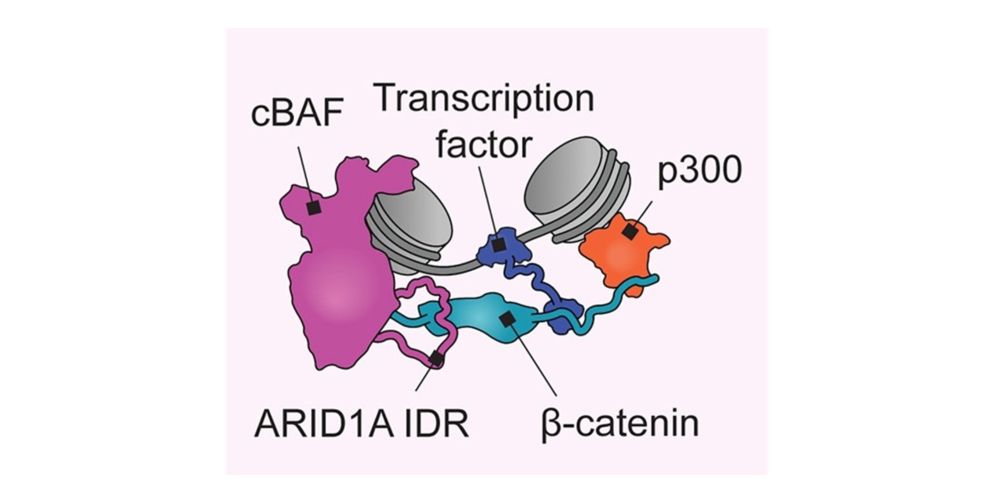
A molecular bridge helps disordered proteins work properly
The findings reveal that despite their disordered nature, the protein interactions that drive gene expression are surprisingly modular and even have an underlying organization.
Drs. HC Hodges @hodgeshc.bsky.social, #chanyuensan, K Cermakova @cermakova.bsky.social et al discovered a molecular bridge that facilitates interactions among disordered proteins involved in regulating #geneExpression. #BetaCatenin @bcmhouston.bsky.social #MolecularCell blogs.bcm.edu/2025/07/24/f...
30.07.2025 17:01 — 👍 3 🔁 1 💬 0 📌 0
Thanks a lot!
24.07.2025 21:28 — 👍 0 🔁 0 💬 0 📌 0
Thanks a lot Ariel. We hope it may increase focus on IDR-domain interactions, we think there’s a lot to do in that space. Hope you’re doing great!
23.07.2025 13:18 — 👍 0 🔁 0 💬 0 📌 0
Thank you so much!
23.07.2025 05:09 — 👍 1 🔁 0 💬 0 📌 0
We were very lucky to have so many amazing collaborators on this paper, including @vaclav-veverka.bsky.social, @cermakova.bsky.social, and many others, including Yuen San Chan as first author. Please check out our paper for more information!
22.07.2025 18:42 — 👍 2 🔁 0 💬 2 📌 0
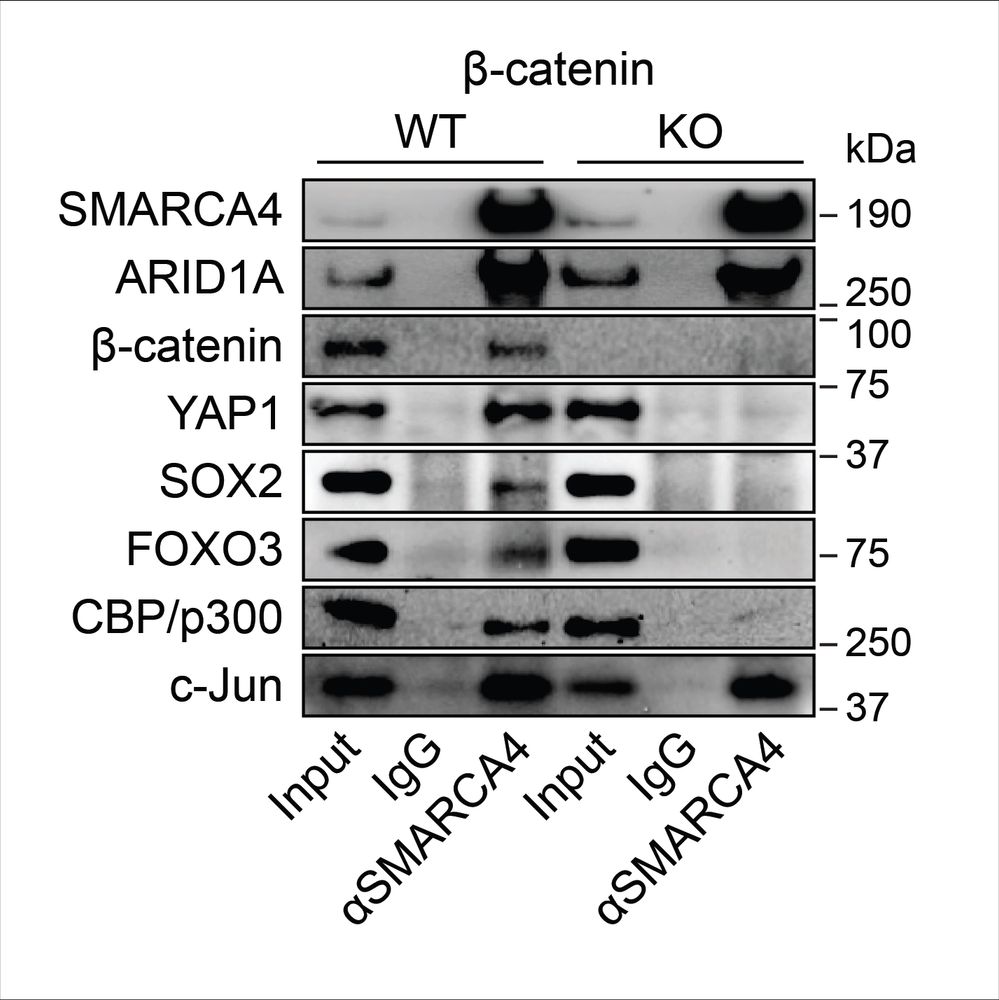
Excitingly, β-catenin links cBAF not only to SF-1, but also to YAP1, SOX2, FOXO3, and CBP/p300, highlighting its critical role in chromatin remodeling across diverse cellular processes
22.07.2025 18:42 — 👍 3 🔁 0 💬 1 📌 0
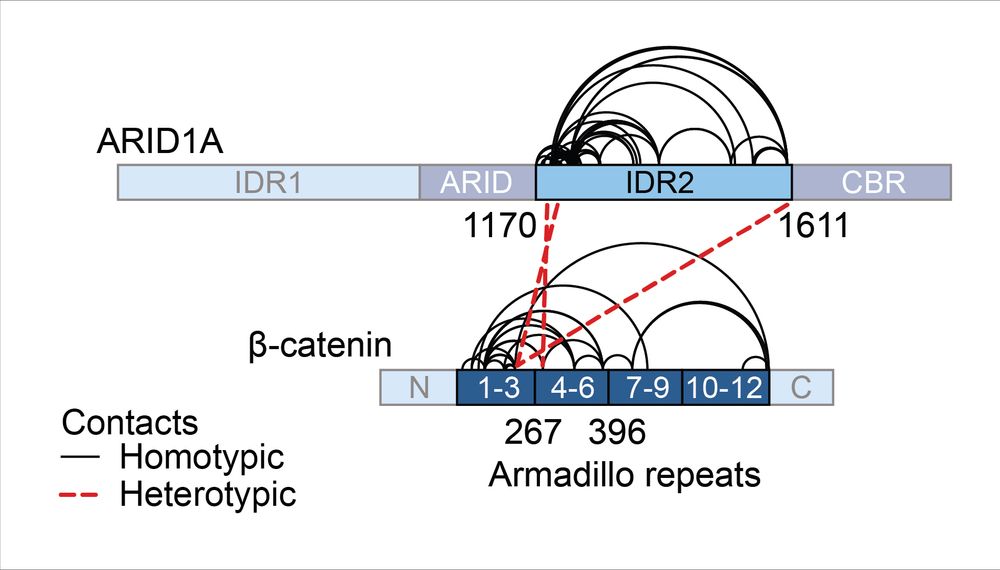
Dissection of interactions revealed that intrinsically disordered regions (IDRs) of ARID1A bind directly to the structured Armadillo domain of β-catenin
22.07.2025 18:42 — 👍 1 🔁 0 💬 1 📌 0
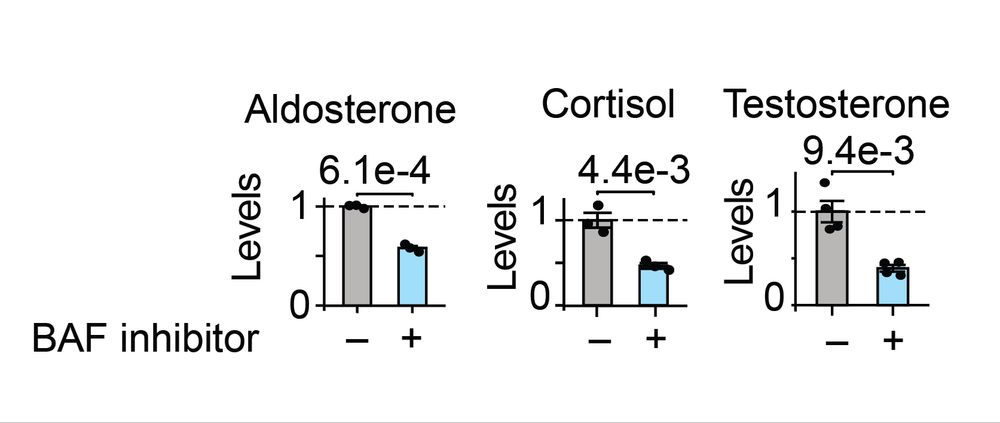
Sustained inhibition leads to loss of steroid production, positioning cBAF as a key steroidogenic dependency
22.07.2025 18:42 — 👍 0 🔁 0 💬 1 📌 0

We show that BAF inhibition disrupts the ability of the TF known as steroidogenic factor 1 (SF-1) and β-catenin to bind at enhancers targeted by ARID1A
22.07.2025 18:42 — 👍 1 🔁 0 💬 1 📌 0
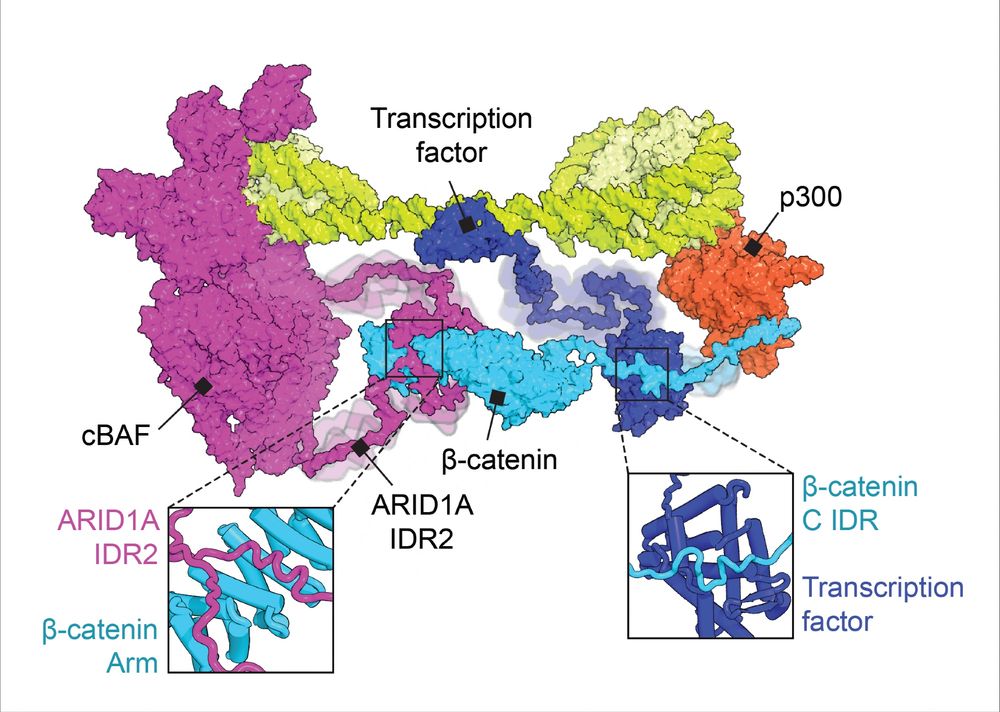
How do chromatin remodelers use #IDRs to find TF binding partners? In our new Molecular Cell paper, we show that β-catenin is an adaptor that links SWI/SNF (cBAF) subunit ARID1A with binding partners via IDR-domain interactions.
www.cell.com/molecular-ce...
22.07.2025 18:42 — 👍 89 🔁 34 💬 11 📌 4
We also show that neural crest cells and NCC-derived neurons tolerate SWI/SNF inhibition. I anticipate that non-cycling cells are frequently independent, and cycling cells with different circuitries have alternatives or plasticity to activate Cyclin D
28.11.2023 20:17 — 👍 1 🔁 0 💬 0 📌 0
Thanks Hiten, it is surprising that SWI/SNF inhibition is well tolerated, and we've seen very good therapeutic window in vivo. Not all cycling cells need SWI/SNF, it's dispensable for example in HEK293Ts
28.11.2023 20:16 — 👍 1 🔁 0 💬 0 📌 0
What do SWI/SNF-addicted cancers have in common? And when are they most sensitive to SWI/SNF inhibition? Check out Katka’s thread highlighting our most recent paper
27.11.2023 14:25 — 👍 11 🔁 5 💬 0 📌 0
A labor of love - our review on why IDRs matter for cellular function is live in Nat. Rev. Mol. Cell. Biol:
www.nature.com/articles/s41...
Working with Birthe Kraglund on this was such a pleasure, and we hope this review will be helpful to a broad audience!
13.11.2023 14:56 — 👍 30 🔁 22 💬 1 📌 2
Loves all things RNA, epigenome editing, and small peptide therapies. Here to like, support and uplift.
Senior scientist @Princess Margaret Cancer Centre, Prof @UofT. BHAG: conquer cancer by treating it as a disease of the chromatin.
Group leader at MRC Human Genetics Unit, University of Edinburgh. Interdisciplinary research on disease #epigenetics. Part-time solo dad. Occasional music and climbing.
https://institute-genetics-cancer.ed.ac.uk/research/research-groups-a-z/sproul-group
Professor for Genetics interested in chromatin structure, histone variants and histone modifications and their roles in gene regulation and disease development.
Associate Professor & Docent @umeauniversitet.bsky.social
Wallenberg Fellow in Molecular Medicine at WCMM Umeå
Postdoc @embl.org
PhD @cniostopcancer.bsky.social
3D genomics , epigenomics, gene regulation, enhancer, cancer, glioblastoma, cancer neuroscience
We study how blood ages & how to improve leukemia treatment, using cell biology + bioinformatics — @mgbresearch @harvardmed @broadinstitute — https://vangalenlab.org
Incoming Assistant Professor, Columbia University | @DamonRunyon.org Postdoc, UC Berkeley | PhD Princeton University | Mobile elements, Structural biology and Genome engineering | http://thawanilab.org
From the Labs at Baylor College of Medicine spotlights the newest and most interesting research information from the bench at the College.
Immunologist @MonashUni, Head of Dept Microbiology, Past President of @ASImmunology; Trying to work out how immunity works, in particular T cells #Tcellsarecool #immunosky
In the Morey lab we study chromatin dynamics in stem cells and cancer.
Associate Professor at Sylvester Comprehensive Cancer Center and University of Miami.
Science + Music
moreylab.com
Vascular biologist. Brain AVMs and Kras, glioblastoma and angiogenesis, lymphatics, and developmental biology.
https://www.wythelab.com
scientist.
tollkuhnlab.org
Structural biologist and biochemist. CNRS researcher at CBM Orléans @cbm-upr4301.bsky.social. Interested in protein modifications & interactions. Also husband, dad of 2, friend, ☧. Personal website: msuskiewicz.github.io
Johnson Chair/Assoc. Prof., Peds DevBio @ CU Anschutz:
#zebrafish, #devbio, heart disease, lateral plate mesoderm, #evodevo, imaging, transgenesis, et al.
#MobileOfficeViews | #AlwaysBeWriting | guitars | Colorado | #SwissAbroad 🧪
Molecular Cell is a Cell Press journal that aims to publish the best papers in molecular biology.
Director CUNY ASRC Structural Biology, Prof CCNY Chemistry & Biochemistry plus GC PhD programs. Studies nature's sensors and uses them to control biology; builds new academic & industry culture. Opinions are solely my own.
Keep up with news from Biochemistry Biophysics at University of North Carolina School of Medicine. We train biomedical graduate students. “Catalyzing Curiosity, Careers, and Cures” linktr.ee/unc_bcbp
(she/her) Computational biologist and post-doc scientist in the Greenleaf and Kundaje labs at Stanford. Interested in understanding how cells know what to become (transcription factors, gene regulation, dev bio, open science) www.selinjessa.com





